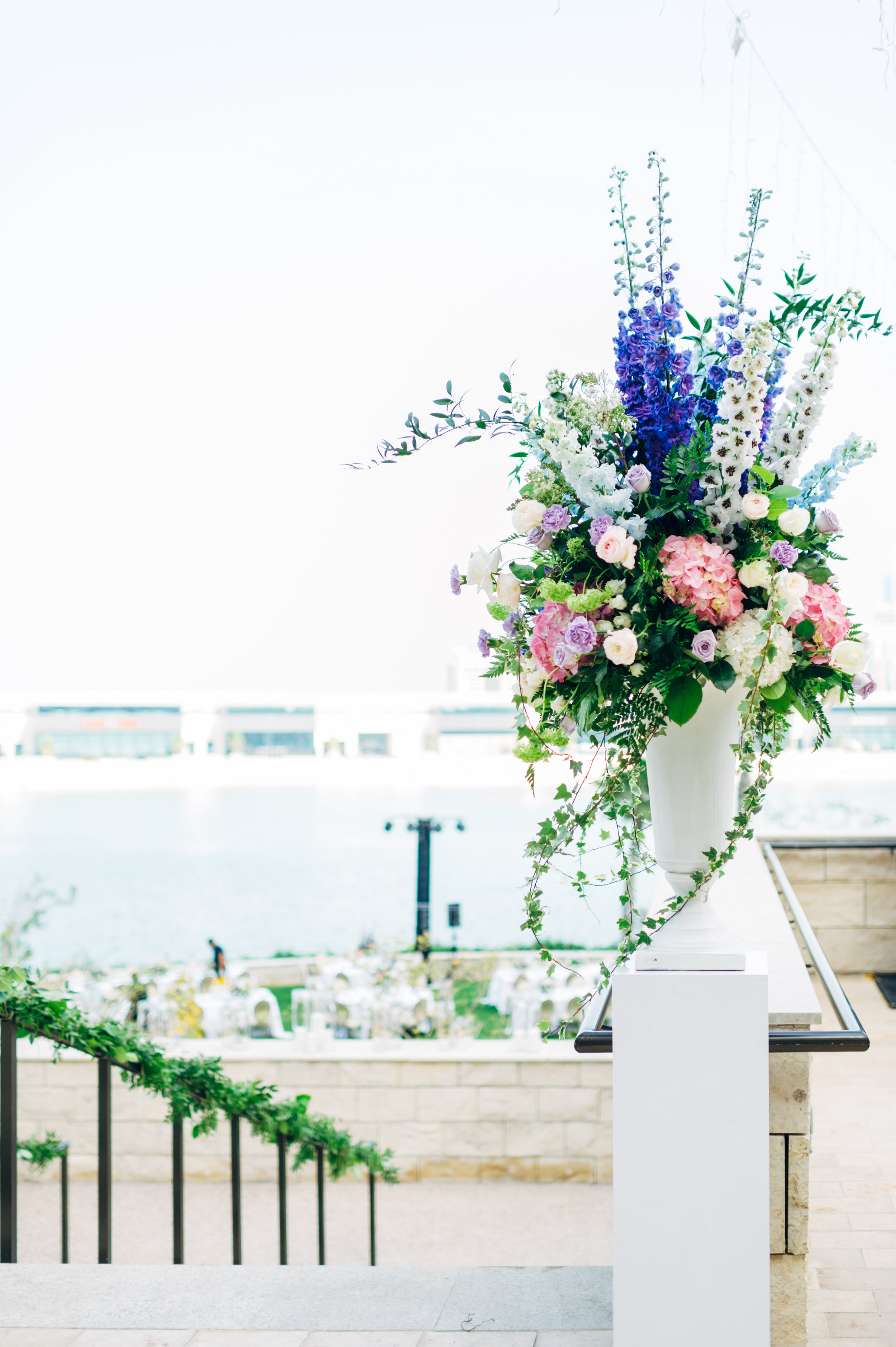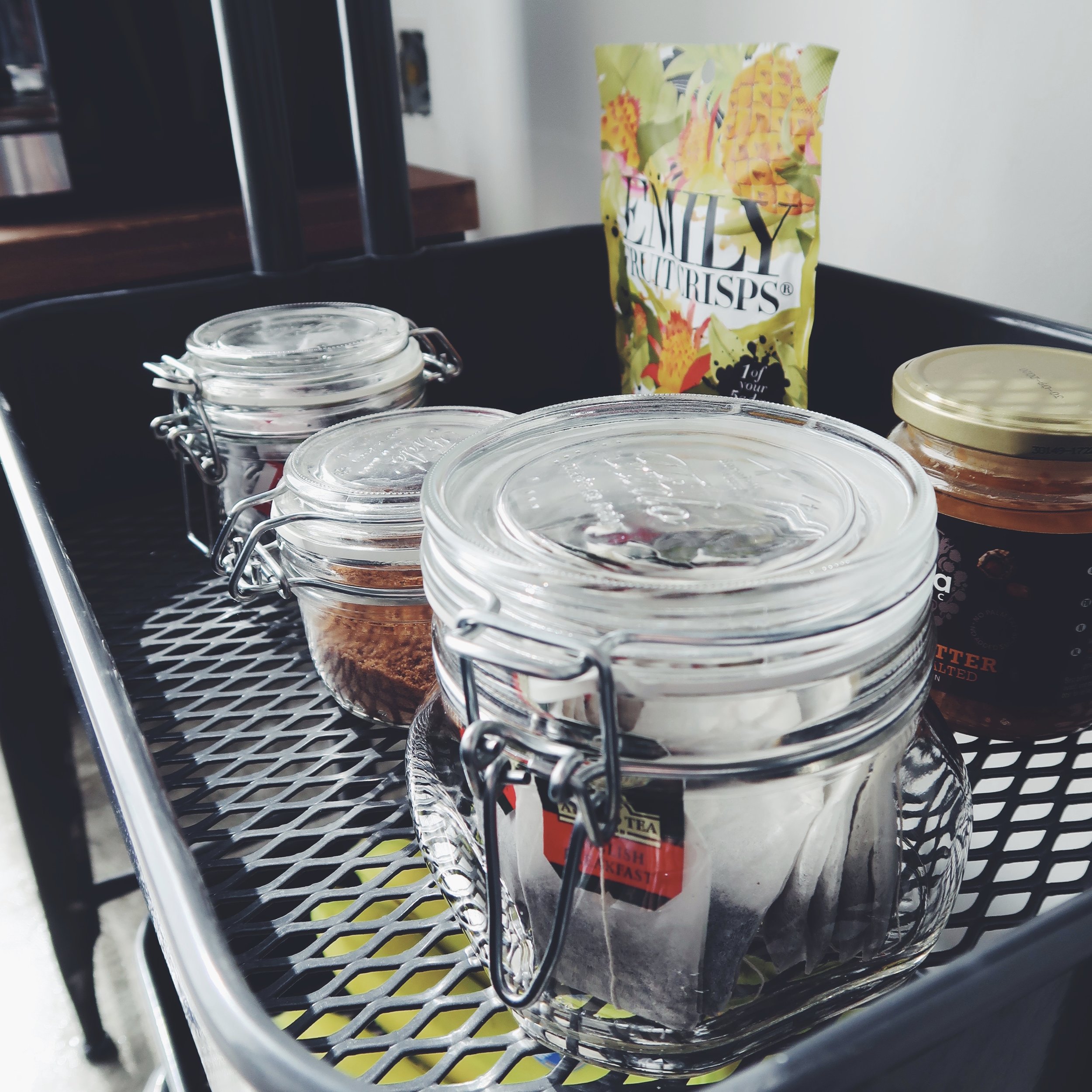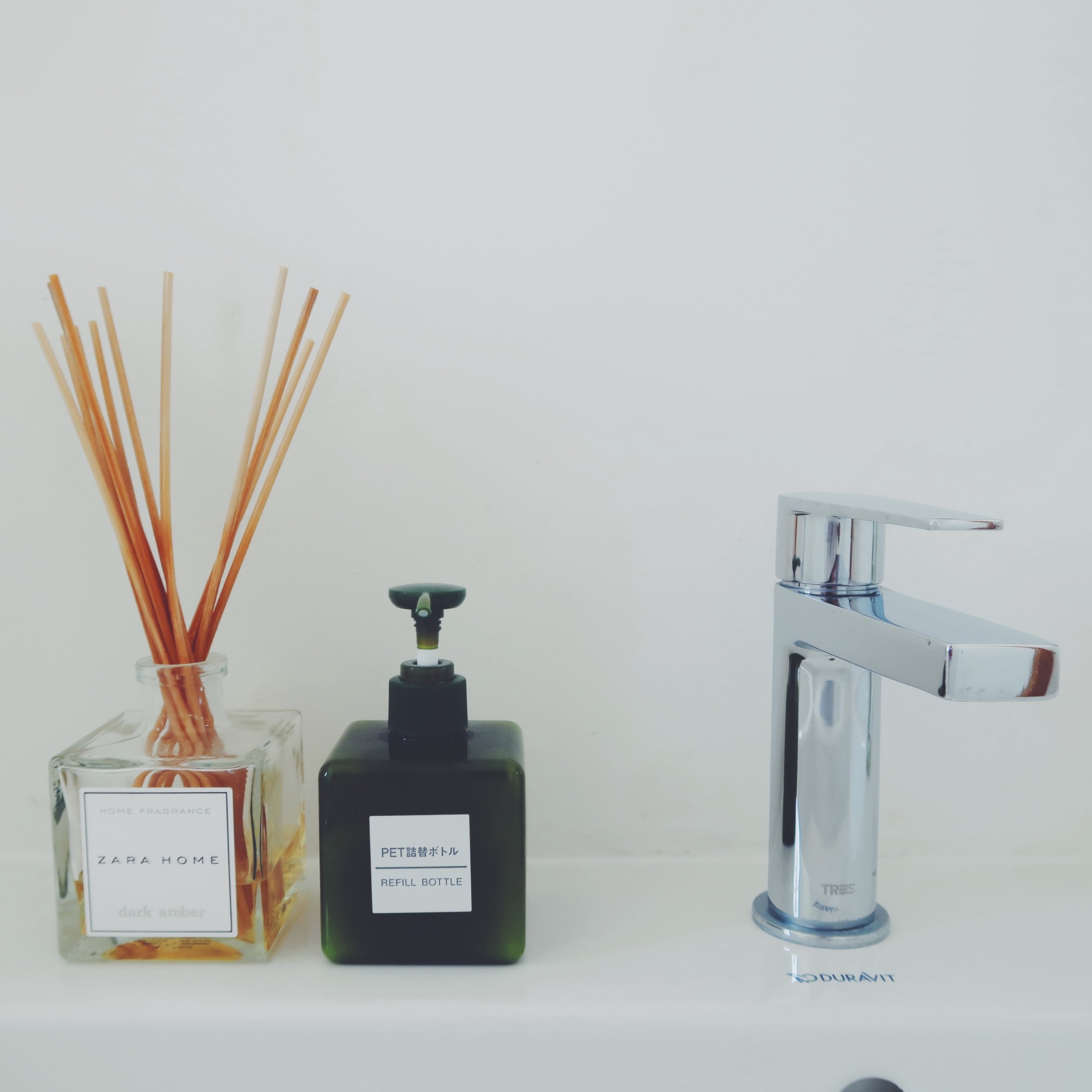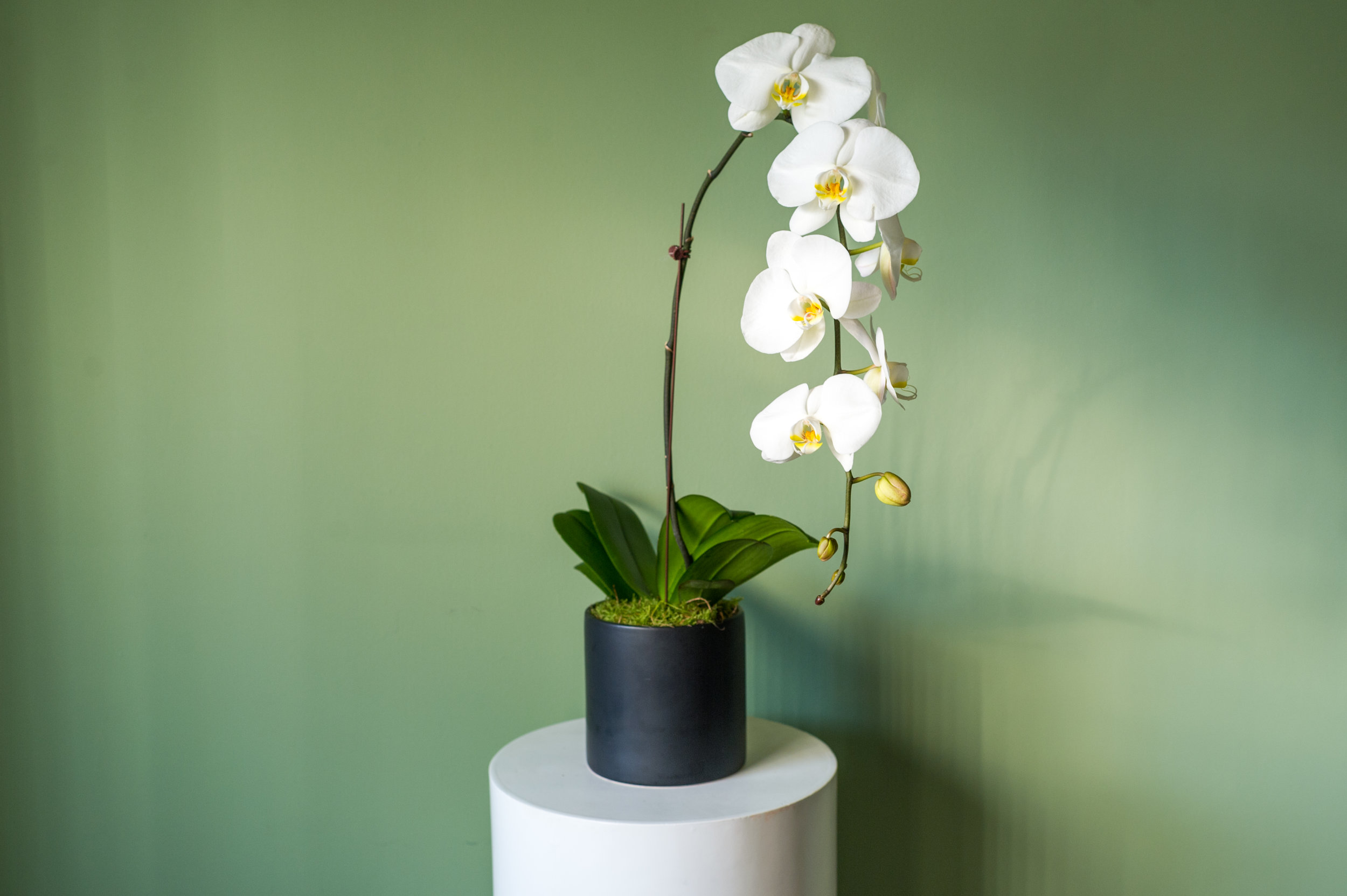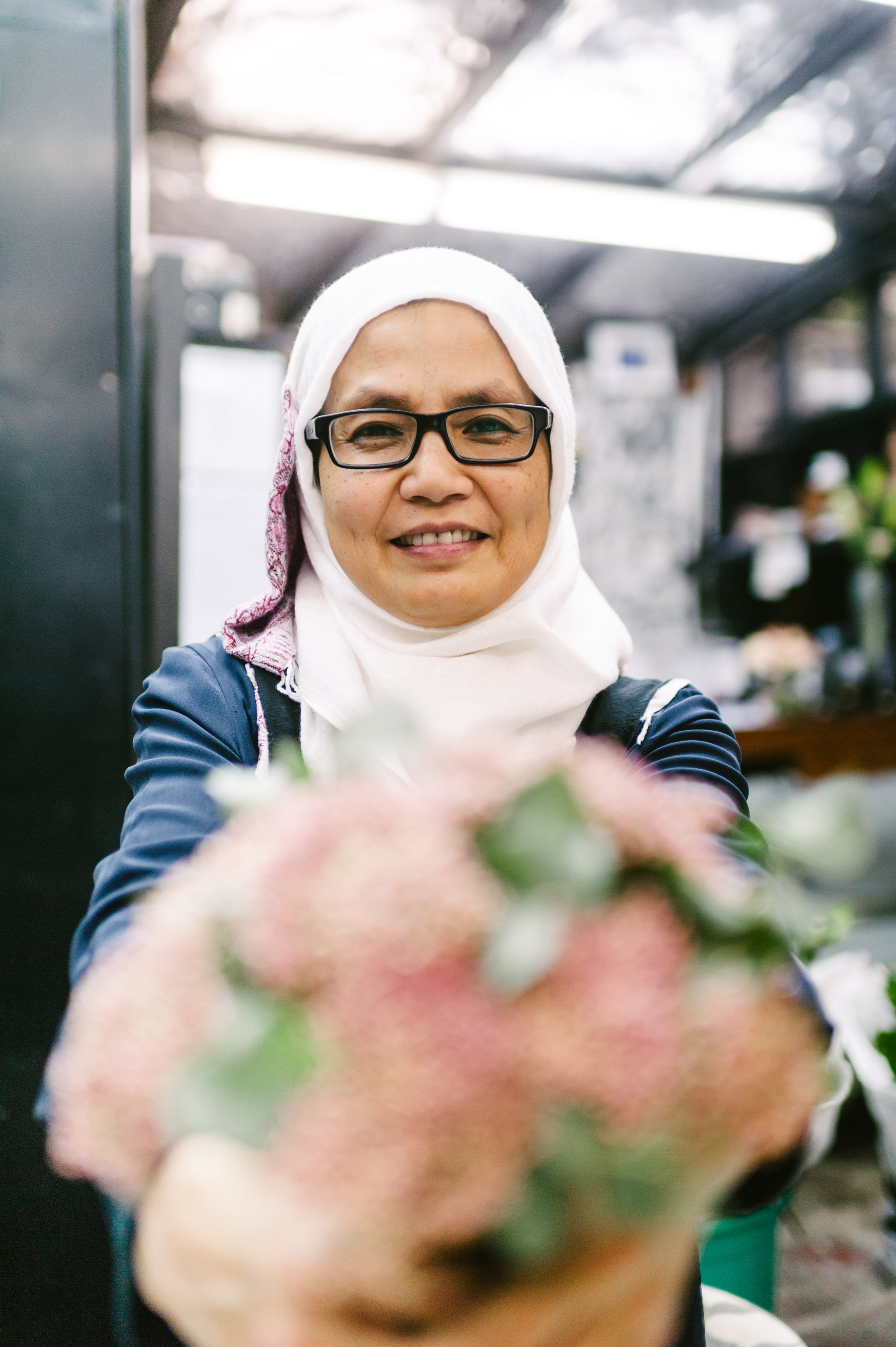Caring for Your Phalaenopsis (The Slightly Harder Part…)
There are a million and one ways to care for your plant and this is just a quick-and-dirty guide to help find an optimal place and routine for your plant. Orchids can be quite temperamental and, believe it or not, do a have a bit of a personality and preferences for what they like. If you’ve tried a few of the tips and your orchid is still not happy don’t despair! Keep experimenting with different locations and strategies to find a spot your plant enjoys and will thrive in.
How often do I water?
There’s a common misconception that because orchids are tropical plants they loooove a ton of water. Wrong! Phalaenopsis orchids should only be watered once the potting medium (the stuff around the roots in the pot) becomes dry to the touch. Poke a finger into the potting medium and if it’s dry give your plant some water—otherwise leave it be.
The best way to water an orchid plant is to remove the pot from it’s decorative container, place the pot under a tap of running water, and allow a stream of room temperature water to run through the roots and potting medium until water flows through the pots drainage holes at the bottom. Let water run through for about a minute but don’t allow the running water to touch the plant’s leaves. Once the potting medium is sufficiently damp allow the pot to completely drain of water BEFORE placing it back in its decorative container. Orchid pots should never be left to sit in a pool of water as this drowns the roots and eventually leads to root rot. (This applies to all plants!)
But I can’t remove my orchid from its decorative container!!!
Help!
In some instances it may be more of a hassle to remove an orchid from its container. In this case much of the same applies from above: only water once the potting medium is dry to the touch and water sparingly to prevent a puddle of water from building up in the base. Some strategies for using a minimal amount of water include placing 1-2 regular sized ice cubes on the roots and allowing the water to slowly trickle into the roots and potting medium. Another is to use a judicious amount, not more than ¼ cup of water, poured into the pot. These amounts apply to a large Phalaenopsis plant. Smaller plants will need much less water.
In this situation less is always better! It is better to give your plant less water more regularly than too much water in one go. You can tell if your plant is not getting enough water if the leaves begin to go droopy and/or wrinkly…in this case increase your watering frequency but again, not too much water! We don’t want to drown the roots!
OK. Got it don’t drown my plants roots! What next?
Orchids love humidity! (And each other apparently…)
Orchid plants thrive in a humid environment and ideally they’d love to be in a spot with 50-70% humidity. Although this isn’t ideal for humans (hair frizz anyone?!) there are still a few tricks to help your plant get a bit more moisture. First things first: don’t place your plant in a drafty spot. Next try a few of the tips below to increase the humidity for your plant.
- The easiest option: place a small humidifier near you plant.
- You can mist the roots of your plant daily with a small sprayer (Pick one up from Ikea or Daiso). The idea is to give the roots some moisture but not a full on watering! Use a light mist.
- If your plant is in a decorative pot place a few pebbles at the bottom of the pot and about enough water to come half way up the stones. Rest the orchid pot on top the stones. Water will slowly evaporate upwards creating a moist environment for the roots. You will probably need to top this up every 3-4 weeks.
- If you can’t take your plant out of its pot, place a glass of water near the pot. This option will probably give your plant the least amount of additional moisture.
- If you’re prone to hot steamy showers, place you plant near your bathroom door so it gets a shot of steam after each shower! (Some of us have been know to bring our plants into the shower a couple of times a week… not naming names…)
- Buy your plant a friend! Orchid plants like to be near other orchid plants. Clustering plants close to each other creates a humid environment for these beauties.
We’ve covered a lot about water… what about light?
Orchid plants want to be in a bright spot without direct sunlight. These guys can get sunburnt! Your plant’s leaves will tell you if it’s getting optimal light. In general orchid leaves should be bright green and not a deep dark green.
- Bright Green Leaves: Great Job! Your plant is getting sufficient light!
- Dark Green Leaves: Hmm, your plant is getting too little light find a spot near a window or under a florescent light. Plants need about 10-12 hours of light daily.
- Reddish-Green Leaves: Rare but this means your plants is getting too much light, try to move it in a slightly shaded area.
- Black Blotches on the Leaves: SOS Your plant is sunburnt! Move the plant out of direct sunlight!
My buds bloomed and then the blooms died. Now what?
As with all flowering plants, blooms eventually die. As each bloom withers pluck it off the stem gently. Although your stem may no longer have any blooms this does not mean your plant is dead. Orchids bloom annually and with care your plant may produce another flowering spike for you next year.
Once the stem no longer has blooms you should trim the stem above a node lower down on the stem. Nodes are little ridges that run along the stem of the orchid branch usually spaced 6-10 cm apart.
Keep caring for your plant as normal and if you get a new plant, place these guys next to each other! If the roots of the plant begin to grow out of the pot it means it’s time for your plant to get a new home. Bring it over to a florist to get new potting medium for the roots.
We’d love to hear if you have any tips to add in the comments! What’s your strategy for keeping your plant happy?















